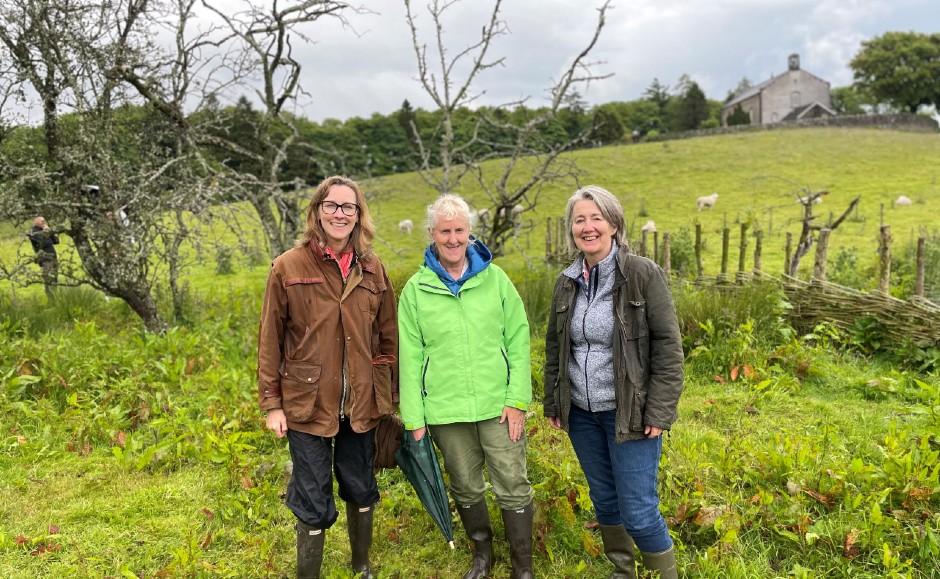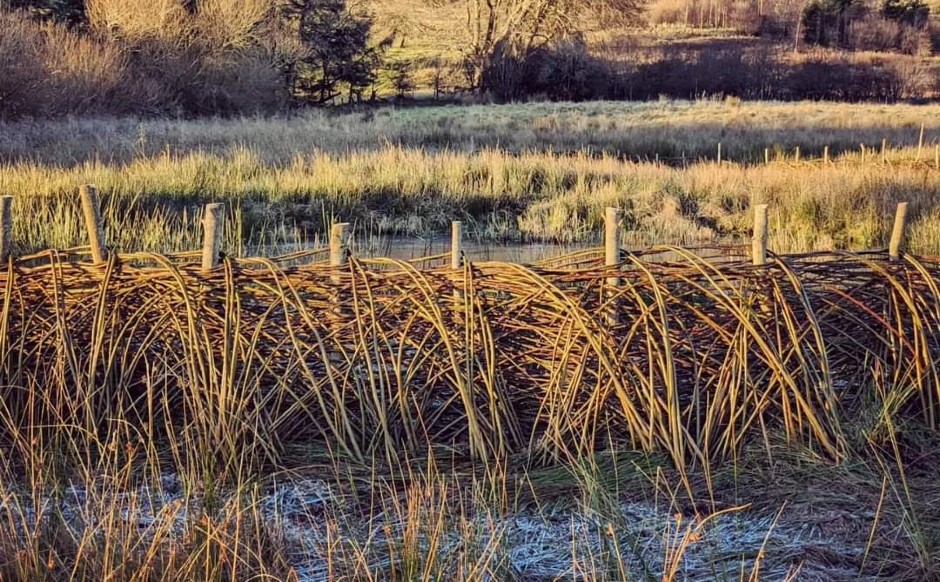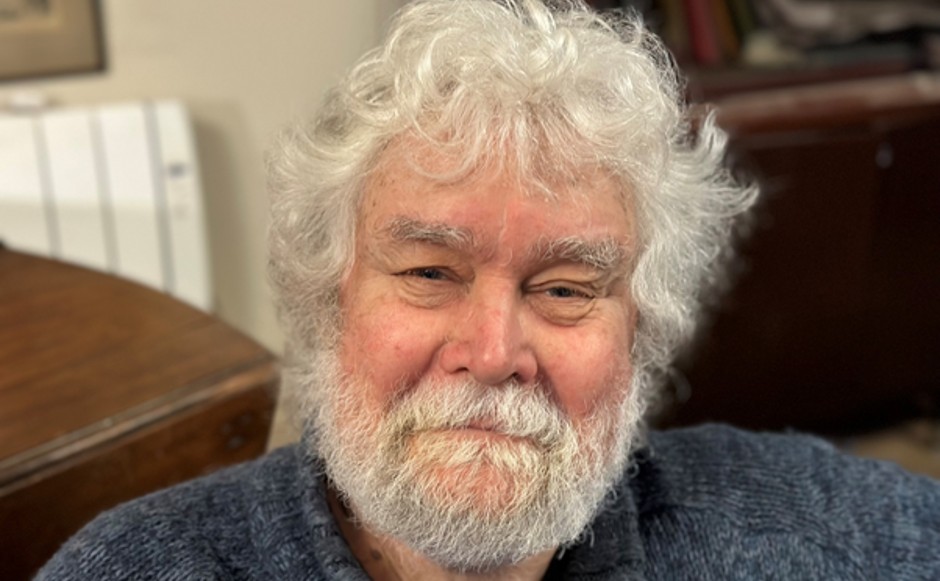Church helps tackle flooding problems in village
Published on 2 August 2024 3 minutes read
The Church played a "crucial role" in helping to reduce the impact of flooding in a Clackmannanshire village and boosting the area for biodiversity.
Natural flood prevention defences have been installed on glebe land at Pool of Muckhart near Dollar to help protect adjacent properties from flooding and they will be maintained by the local authority for at least 10 years.
The project is a partnership between Clackmannanshire Council, Pool of Muckhart Flood Group, Muckhart Parish Church, Forth Rivers Trust (FRT) and members of the local community.

Flooding problems are linked to heavy rainfall and a decision to divert a little burn that comes straight down from the east side of Seamab Hill, increasing the water catchment area by 20%.
This resulted in the back gardens of properties that had the burn running through them being completely flooded.
FRT designed and delivered the natural flood management project and it was funded by a grant from Scotland's nature agency, Nature Scot.
A series of leaky barriers designed to slow the water down during periods of high flow while allowing the channel to flow as normal during regular flows have been installed.
Three of them are made of untreated logs and five were made of willow spiling, an ancient technique consisting on living willow stakes with living willow whips planted and woven creating a willow hedge in a basket pattern.
Two water deflectors and channels designed to deflect some water from its course during high flows and directing it towards some wetland scrapes to be stored for a short period of time, have been put in place.
Natural barriers
Four scrapes have been established.
The first one is a dry scrape, designed to be dry most of the year and to fill up during periods of high water flow while the other three are in the wetland area.
They hold some water all year round and are designed to increase the habitat variability in the wetland area, giving open water habitat to amphibians and waterborne invertebrates.
Some bird species have been attracted to the area to use it as feeding grounds.
Three willow barriers were been made by FRT staff and community volunteers.
Placed within the wetland area, south from the wetland scrapes, they slow any overspill and soak up some of the standing water in the wetland to help create a more dynamic ecosystem.
Claire Cowell and Morag Menneer are the heads of Land and Estates for the General Trustees, which manages properties including glebe land on behalf of the Church.
They recently visited the project and described it as "very inspirational".
"The General Trustees are delighted to be able to help alleviate the risk of flooding to houses by giving permission for natural defences to be installed on glebe land," said Ms Cowell.
"The council's first proposal was to do a lot of hard engineering, installing large pipes on the steep hill and diverting the water away from the village.
"When this proved impractical they came up with the idea of a more environmentally friendly project."
All the pupils at Muckhart Primary School participated in a series of environmental engagement games where they learned about ecosystems, invertebrates, and flora.
They scattered native flower seeds in the glebe field and they have since bloomed.

John Anderson, treasurer of Muckhart Parish Church, said: "We were pleased to be actively involved in a partnership with our local community to install natural flood measures in the glebe field, which will significantly contribute to reducing the flood risk within the village.
"Whilst the project delivers an effective solution to a flooding problem, it also promotes and improves local biodiversity with enhanced local habitat within the local area"
Mario Palomo, project officer at FRT, said: "The Church's role in this project was crucial for its success.
"Not only did they provide the working space that is the glebe field and allowed for the improvements to happen, but they also provided for FRT staff, volunteers and stakeholders a safe, dry space to shelter, have meetings and deliver engagement events at no cost.
"Through multiple events, Mr Anderson, assisted by Greer Conroy (session clerk at Muckhart Parish Church) , have been very welcoming, accommodating and extremely helpful while also being involved as volunteers themselves."
Mr Palomo said the project's benefit to wildlife became apparent very early on.
"Soon after the creation of these features, fauna and flora blossomed," he explained.
"In particular the wetland scrapes had a huge bloom of different flora and both dragonflies and damselflies quickly established.
"Soon after, tadpoles were spotted and the establishment of common frogs, toads, and smooth newts happened.
"Sand martins were also spotted feeding above the wetland and the appearance of wading birds seems to be a matter of time, since the habitat is now of higher ecological value."


